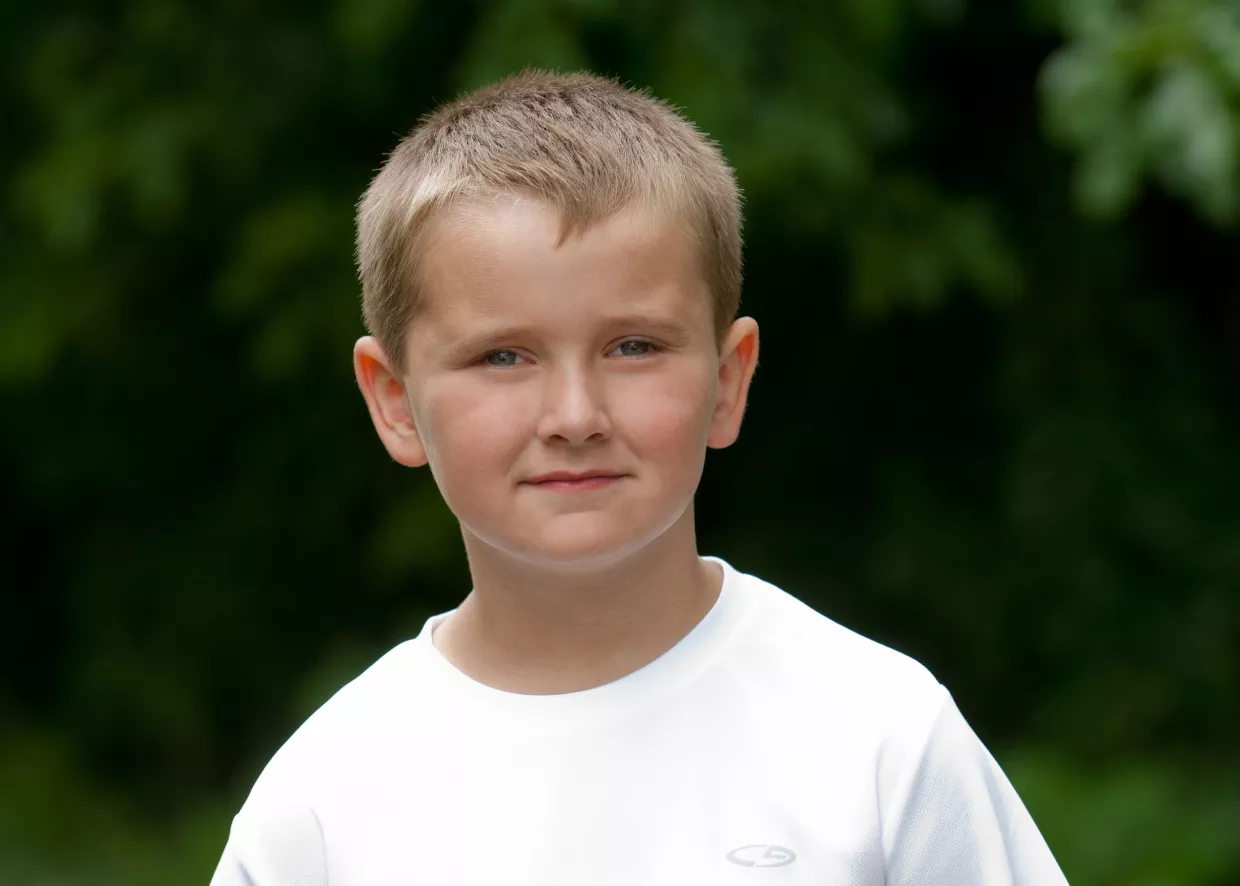Aidan Hanson

In September 2012, 6-year-old Aidan Hanson complained to his mother, Tena, about a noise in his left ear. Thinking it was an ear infection, she took Aidan to their local clinic.
But when the nurse looked in Aidan’s ear, she said to Tena, “You’ve got to see this.”
Aidan’s eardrum appeared crumpled. The Hansons were referred to a local ear, nose, and throat doctor, who decided surgery was the best way to determine what was wrong.
Almost immediately, the doctors found a large mass behind Aidan’s eardrum. They ended the surgery and referred the Hansons to University of Iowa Stead Family Children’s Hospital.
“When we came to UI Stead Family Children’s Hospital, we felt like we needed a lot of questions answered,” recalls Tena.
The next day, the Hansons met with otolaryngologist Bruce Gantz, MD, who examined Aidan and ordered a CT scan. Gantz determined that Aidan had a cholesteatoma—an abnormal skin growth in the middle ear.
A cholesteatoma can form as a result of an infection, but in Aidan’s case it was congenital, meaning for six years it had been growing in his ear, destroying his hearing bones and filling the attic along his brain.
The diagnosis was shocking to Tena and Cory, Aidan’s father.
“He was a seemingly healthy kid,” says Tena. “We didn’t realize he’d been suffering hearing loss. It seems he had gotten pretty good at lip reading over the years, and we didn’t realize it.”
While cholesteatomas are not cancerous, they are destructive and must be removed. If a person with this mass got an ear infection, for example, the infection could travel along the mass into the brain. If large enough, they can also hit facial nerves, causing facial paralysis.
Gantz showed the family pictures of the procedure and described his surgical technique. Cholesteatomas can return after removal, requiring additional surgeries, but Gantz performs a hybrid of multiple surgical methods. His recurrence rate is less than 3 percent.
Aidan underwent surgery to remove the cholesteatoma in November 2012. For months afterward, he had to regain balance and refrain from physical activity so the incision and eardrum could heal.
Afterward, Gantz made sure Aidan knew how the surgery had helped him.
“He explained to Aidan that his bones in his head were like LEGOs,” remembers Tena. “He did a great job explaining it to Aidan and making it understandable to him—that his head would be put back together like LEGOs.”
Aidan returns to UI Stead Family Children’s Hospital for scans and hearing tests. In June 2013, he had reconstructive surgery to place a titanium prosthetic hearing bone that will help conduct sound. There is currently no evidence of recurrent disease.
Today, Aidan is back to fishing, building, and spending time with his sister, Hailey.
“A year ago we were terrified,” remembers Tena. “We were really feeling hopeless about what he was faced with. At this point, it’s miraculous to us what he’s been through this past year and how well he’s come through it. We’re just thrilled, absolutely thrilled.”